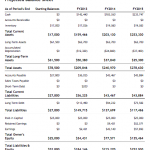Content

If a company has a low DIO, it is converting its inventory to sales rapidly – meaning working capital can be deployed for other purposes or used to pay down debt. If the company has a low DIO, there is also less chance that stock will become obsolete and have to be written off. However, a low DIO might also indicate that the company could struggle to meet a sudden increase in demand. Inventory turnover ratio is a quick and easy calculation you can use as a litmus test to see if you need to dig deeper into your inventory, stock, and ordering practices. If the ITR is too high, it’s time for the Days’ Sales in Inventory calculation, which will reveal a dollar amount of excess food you’re carrying. If you’re already applying all of the other tips in this list and you’re still not making sales, your pricing could be too high.
It is also important to note that the average days sales in inventory differs from one industry to another. To obtain an accurate DSI value comparison between companies, it must be done between two companies within the same industry or that conduct the same type of business. For example, a retail store like Wal-mart can be compared to Costco in terms of inventory and sales performance. DSI is the first part of the three-part cash conversion cycle , which represents the overall process of turning raw materials into realizable cash from sales. The other two stages aredays sales outstanding anddays payable outstanding . While the DSO ratio measures how long it takes a company to receive payment on accounts receivable, the DPO value measures how long it takes a company to pay off its accounts payable.
Days Sales in Inventory Ratio vs. Inventory Turnover
The average number of days to sell inventory really varies from business to business depending on the operating model, items being sold, the transit time, etc. While there is not necessarily one perfect DSI, companies typically try to keep low days sales in inventory. A lower DSI indicates that inventory is selling more quickly, which is usually more profitable than the alternative. To calculate the DSI, you will need to know the cost of goods sold, the cost of average inventory, and the duration of the time period for which you are calculating the DSI. ABC Limited, a Microsoft Corp. recorded a total of $3 billion as ending inventory.
- DSI stands for days sales outstanding, which is an inverse of inventory turnover over a given time period.
- Speeding up the rate at which you deplete inventory means that you are moving your list quicker, giving you room to receive your cash faster as well.
- He wants to assess his business’s Days Sales in Inventory for the previous year.
- To get a better understanding of your business, you can use a variety of financial ratios.
You could use the amount of ending inventory in the numerator, rather than the average inventory figure for the entire measurement period. If the ending inventory figure varies significantly from the average inventory figure, this can result in a sharp change in the measurement. days of sales in inventory formula Conclusions can likewise be drawn by looking at how a particular company’s DIO changes over time. For example, a reduction in DIO may indicate that the company is selling inventory more rapidly in the past, whereas a higher DIO indicates that the process has slowed down.
High or Low Days Sales in Inventory
On the other hand, some businesses choose to use 360 days, especially if they are performing based on quarterly days in inventory calculation of 90 days. This amount is usually decided based on the company’s specific needs and operations. Days sales in inventory is calculated by dividing ending inventory by cost of goods sold and multiplying by the number of days in the period, usually 365. The result shows how long it takes the company to sell their full inventory stock.

This additional expense is not good for profitability and there is a chance of inventory obsolesces. We strive to empower readers with the most factual and reliable climate finance information possible to help them make informed decisions. This team of experts helps Carbon Collective maintain the highest level of accuracy and professionalism possible. Go a level deeper with us and investigate the potential impacts of climate change on investments like your retirement account. Another difference between the two ratios is that the DSO ratio uses Accounts Receivable as its denominator, while the DSI ratio uses Cost of Goods Sold as its denominator.” While the average DSI depends on the industry, a lower DSI is viewed more positively in most cases.
How do you calculate days sales in inventory?
What is the formula for Days Sales of Inventory? The formula for Days Sales of Inventory is: Days Sales of Inventory = (Average Inventory ÷ COGS), multiplied by 365.
